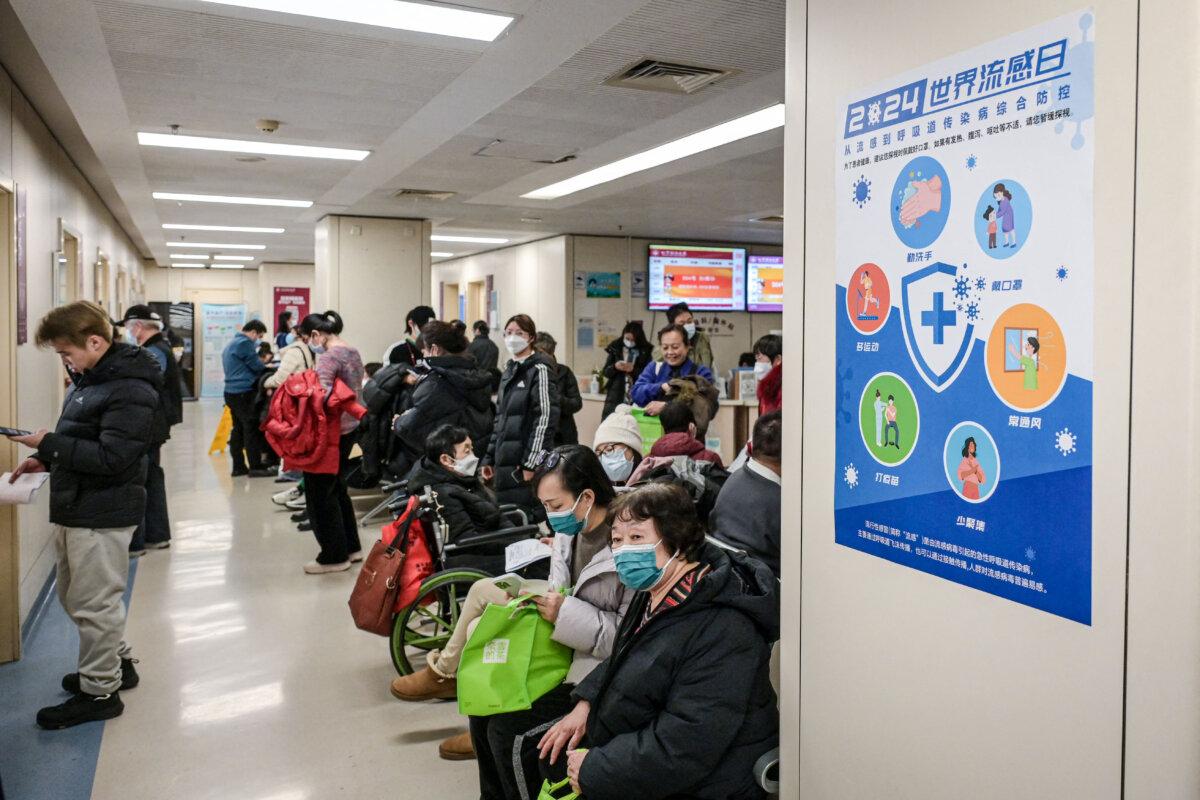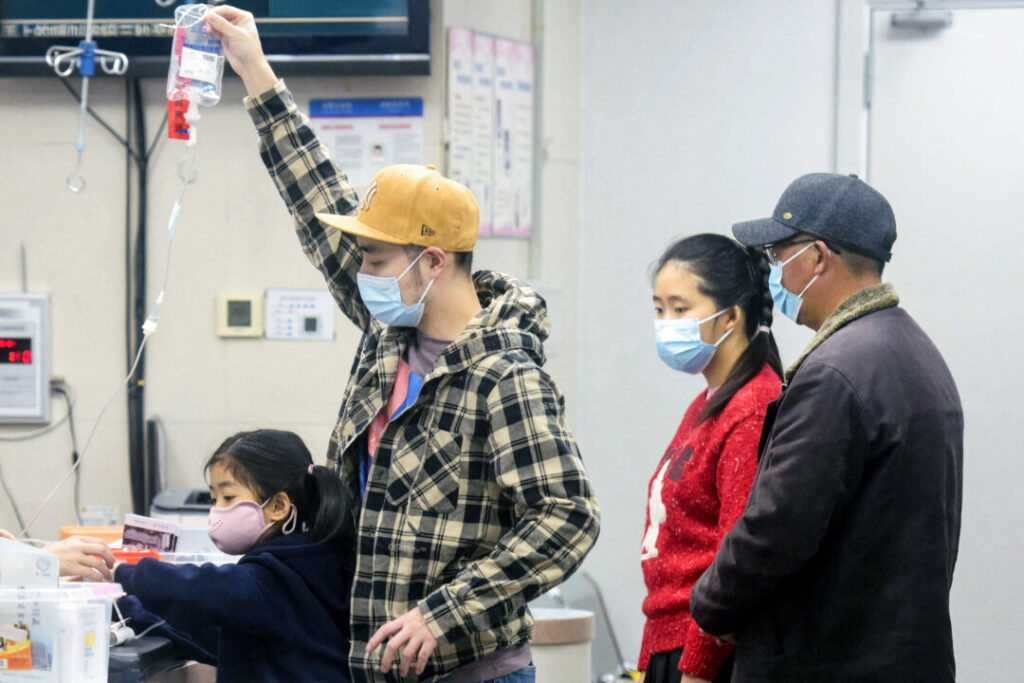Experts say CCPs continue to underreport the scale of the outbreak as they spread to Hong Kong and Taiwan.
China’s official COVID-19 infection rate doubled in April, according to the latest report from health authorities in the Communist government. Meanwhile, since early May, Chinese citizens across the country have reported a new wave of respiratory infections, causing hospitals to become overcrowded once again.
Experts who spoke in the Chinese version of the Epoch Times say the ruling Communist Party of China (CCP) has continued to cover and downplay the true scale of the country’s Covid-19 outbreak, with Hong Kong and Taiwan reporting an increase in infections in recent weeks.
A May 8 report published by the China Centers for Disease Control and Prevention (China CDC) confirmed that China’s positive Covid-19 rate (excluding Hong Kong and Macau) jumped from 7.5% in the first week of April to 16.2% from 7.5% in the first week of April.
According to a report by the Chinese CDC, the main pathogen detected in respiratory samples of patients with influenza-like symptoms in the outpatient and emergency departments of Sentinel Hospital is SARS-COV-2, which causes Covid-19, rhinovirus, and parainfluenza viruses in humans.
Beijing’s Centers for Disease Control and Prevention issued a notice on May 12, and the region’s rising Covid-19 infections are attributed to strain NB.1, a descendant of the SARS-COV-2 omicron recombinant strain XDV.
XDV-related recombinant variant XBB According to the health agency, it caused a massive Covid-19 outbreak in China from late 2022 to 2023.
“The Chinese CDC does not report a percentage of severe cases, hospitalization or mortality rates. Therefore, the outside world cannot know the actual situation,” Sean Lin, an assistant professor in the Department of Biomedical Sciences at Feitian College and a former US Army microbiologist, told the Epoch Times on May 17.
“The number of infections in mainland China has certainly been rising recently, but Beijing has not even reported actual infection numbers.
“Participants have three to four multiple infections of respiratory virus co-infection,” Lynn said. “This is more than just a Covid-19 infection.”
He suspects that the Chinese administration is using Covid-19 infections in its latest report to hide “this more serious, more severe situation of multi-infection.”
“The Chinese administration has not spoken to the public about the seriousness of the situation,” Lin said.
Dr. Jonathan Liu, director of Liu’s Wisdom Healing Center, has a similar rating.
“This wave of respiratory infections in mainland China is primarily caused by Covid-19, but it is combined with other viruses,” he told the Epoch Times on May 17.
Due to the history of CCPs that covered information and published unreliable data, including underreporting Covid-19 infections and related deaths since early 2020, accounts from residents can provide valuable information to understand the ground situation in this totalitarian country.
Chinese residents told the Epoch Times that many people around them have been infected with COVID-19 or experienced COVID-like symptoms since their holidays.

People will wait in the outpatient area of the respiratory department of a hospital in Beijing on January 8, 2025. Jade Gao/AFP via Getty Images
“I was diagnosed with Covid-19 in the hospital, but they had to report it. I suspected I had been infected when I went to the emergency room,” said Xu Ling, a resident of Beijing’s Chaoyang district, who used the pseudonym for fear of retaliation from authorities.
“I’ve recovered almost completely, but it took a long time. I took Cefroxime,” Xu said. He mentioned antibiotics that he said are being used as “special medicine for Covid-19” in China.
A young parent in Jibo, China’s East Kai province, who requested anonymity for security reasons, said he signed the virus on his May holiday while visiting another city.
“Everyone our family tested positive for Covid-19,” he said, but his symptoms were milder than when he first contracted him.
“I tried to make it difficult for a few days, but I couldn’t,” he said. “I’m still coughing, so I think I have mild pneumonia.”
Xiao Qiang, who used the pseudonym due to safety concerns, said “many people have recently caught a cold.”
Most of my relatives and friends have fever,” said a resident of Baoji City, northwest Shaanxi province of China.
“The symptoms seem to be the same as those of the previous waves of Covid-19,” he said. “If you see a doctor, they just say you have a cold.”
Liu said the increase in Covid-19 infections since the May Day holiday is linked to many people traveling.
Infectious diseases rise in Hong Kong and Taiwan
Hong Kong health officials, which are independent from mainland China, reported an increase in Covid-19 infections on May 15, with 81 “severe cases” and 30 deaths. The positive rate for Covid-19 jumped from 6.2% from April 6 to April 12 to 13.66% in mid-May.
The positive COVID-19 rates in respiratory samples and virus content in Hong Kong’s sewage exceed the highest levels recorded a year ago. Contaminated wastewater can become an important source of virus.
Liu said Hong Kong’s data is relatively realistic than data from the mainland.
“The numbers announced by the Chinese CDC are actually too low. For example, they only reported seven deaths in March, depending on the usual epidemic rate,” he said.
“Canada reported 1,915 Covid-19 deaths in 8.5 months, so the average death toll per month is above 225,” he said.
“How could only seven people die in mainland China in a month? It’s hard to believe that,” he said.
According to reports from the island’s health authorities, Taiwan’s Covid-19 infections also rose significantly around the same time.
“Taiwan’s Covid-19 infections could peak in June,” said Dr. Huang Chian-Feng, PhD, of the Institute of Epidemiology and Preventive Medicine at the National Taiwan University.
“Analyses of the virus strains show that they came primarily from Hong Kong and mainland China,” he told the Epoch Times on May 17.
Huang said that the symptoms are “easy to ignore” because some symptoms are atypical and reactive, and “include those related to the gastrointestinal tract, such as stomach pain, nausea and vomiting.”
Luo Ya, Ning Haizhong and Hong Ning contributed to this report.



